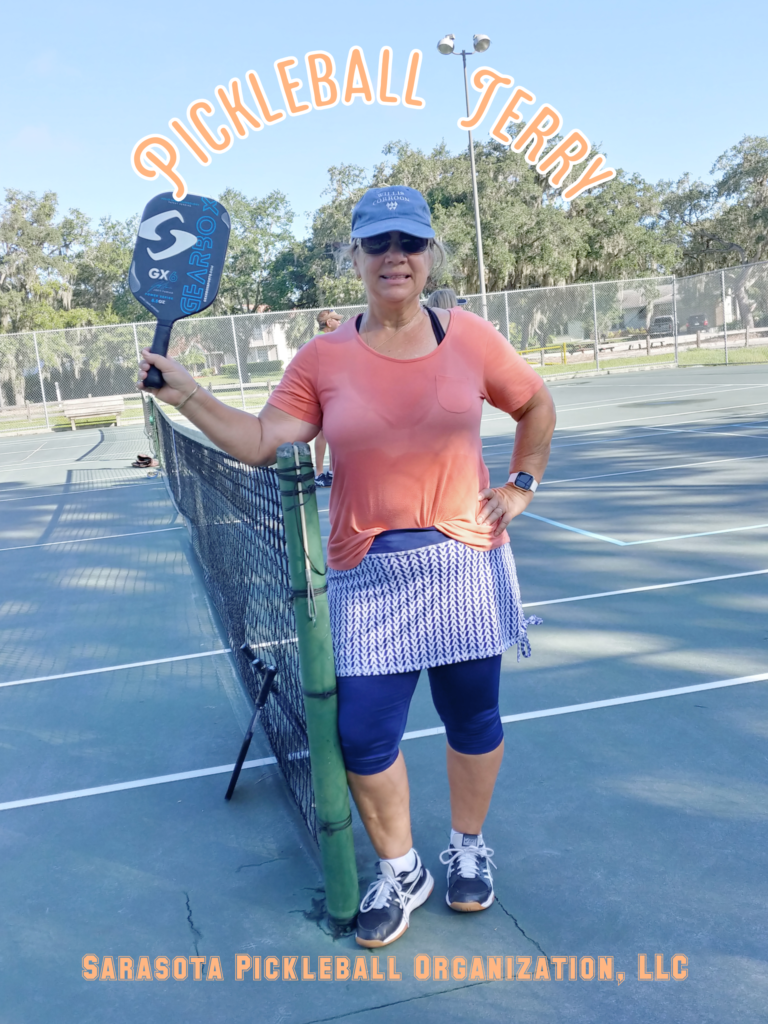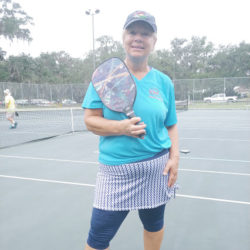Pickleball: Where it all began
Humans have always been great at improvising. In today’s world, improvisation can mostly be seen in the performing arts, such as music, dance, theater, and even comedy. But thanks to mankind’s ability to make the most out of every situation, we’ve even invented some of the world’s most popular sports. For example, the origins of soccer started when humans filled up pig bladders to kick around on small makeshift courts….all for the purpose of passing time. And for the history of pickleball, it all began thanks to humans’ innate desire for personal entertainment.
History
Like all great stories, pickleball came about on a sunny day with little to do. In 1965, two dads named Joel Pritchard and Bill Bell arrived at Pritchard’s home on Bainbridge Island, Washington, after a golf outing. They found that their families were bored with no way to pass the time. Looking to alleviate the boredom of his loved ones and close friends, Pritchard started to hatch a plan to bring an end to the group’s summer time woes.

Pritchard’s property had an old badminton court so they started there with hopes of playing. However, they couldn’t find enough rackets for a full game so instead, he improvised by using spare ping pong paddles and a whiffle ball. With these bits and pieces lying around, a brand-new game was born. Today, you know it better as pickleball.
As the weekend went on and time flew by, they enhanced their makeshift game further with their own set of house rules. At first, the net was set at badminton’s regulation height of 60”, but the group found that the whiffle ball bounced well on their asphalt court so they lowered it down to 36”. At this point, there weren’t many rules to their game so during the following weekend, Pritchard and Bell introduced their new creation to another family friend named Barney McCullum. From there, with heavy inspiration from badminton, the three dads created new rules with the sole purpose of family play and accessibility in mind.
Two years later in 1967, Joel Pritchard constructed the first, permanent pickleball court in the backyard of Bob O’Brian, who was Pritchard’s neighbor and close family friend. The decision to build a dedicated and permanent court further cemented their homemade game into a loveable pastime. As the game started to gain steam in the Pacific Northwest, a corporation by the name of Pickleball, Inc. was founded in 1972 to help interested players buy equipment to play the game. This included paddles, nets, and balls that weren’t taken from other racquet games, but were created specifically for pickleball. Not only did the founding of this corporation help people find the right equipment to play pickleball, but it helped transition the game from a local pastime to a legitimate sport.

Fast forward to today, and you’ll find that pickleball is the fastest growing sport in the United States with international growth gaining steam. Currently, the U.S.A. Pickleball Association lists nearly 4,000 locations where you can play nationwide. To understand how pickleball’s popularity has exploded to this point over the last 50 years, let’s take a look at the nature of this fast-paced, friendly, and enjoyable sport.
What’s Needed To Play Pickleball
Pickleball is very affordable and easy to pick up since you only need basic gear to get started. If you decide that you enjoy pickleball and want to play seriously, you can always invest in better gear the further along you go. To begin, you’ll need a paddle, a ball, appropriate apparel, a net, and a court to play on.
Paddle: The paddles needed to play are larger than table tennis paddles, but smaller than normal tennis rackets. They can be made from any number of materials, from wood and graphite, to aluminum and other composite materials. For beginners, a wooden paddle is inexpensive but may be a little more difficult to control.
Ball: Originally, pickleball was played with a spare wiffle ball. Today, pickleball is played with a similar ball that’s still lightweight with holes. Make sure you purchase the right ball to use depending on indoor or outdoor use. If you’d like to play with an official ball, check out the USAPA’s guidelines.
Apparel: Unlike tennis or other sports, you don’t need to follow a dress code. All you need is basic athletic apparel and comfortable tennis shoes to play in.

Pickleball Basic Rules
Pickleball can be played as either singles or doubles and the rules are the same for both iterations.
-
Without bouncing the ball off the court, it must be served underhanded and diagonally to the opponent’s service court from behind the baseline.
-
The serve has to clear the net and may not land in the kitchen.
-
Points are scored when the opponent faults (failing to return the ball, hitting the ball out of bounds or into the net).
-
Only the serving team can score.
-
The server will continue to serve, each time by alternating service courts, until the serving side faults.
-
Games are played to at least 11 points and must be won by a lead 2.
-
After the ball is served, the ball must bounce at least once on each side before being able to volley the ball. This is known as the double bounce rule.
-
Players cannot volley the ball while standing within the non-volley zone or on the non-volley line.
How is Pickleball Played?
Despite how complicated the rules might sound, pickleball is easy to pick up with only a few matches of play. With such a friendly atmosphere at the core of this sport, other players will be more than happy to help you grasp the rules. The more you play, the quicker these rules will become second nature so you can begin your journey on the road to mastery!
The Court
Pickleball is played on a badminton-sized court that measures 44’ by 20’. The net measures 36” on the sides and droops down to 34” in the middle. These are the standard regulations for both singles and doubles play.
The Serve
Starting on the right-hand service zone and then alternating between serves, the server starts by standing behind the baseline at the end of the court. Then, with the paddle below the waist, the ball must be served underhanded to the diagonal opponent’s service zone. So, for example, if you serve from your left service zone, then the ball must land in the opponent’s left service zone and vice-versa. Serves must clear both the net and the non-volley zone, including the non-volley lines (if the ball touches this line during the serve, it’s considered a fault).
During a serve, the ball cannot bounce on the ground and must be hit while in the air. Additionally, both feet must be behind the baseline during service. Only one attempt at serving is allowed, unless the ball hits the net and lands in the proper service court (in this case, this is known as a “let” and the server gets another chance).

Serving Sequence
In a doubles match, each player gets to serve until a fault occurs. The only exception to this rule occurs during the first service of each game, where only one player from the initial serving side gets to serve before service is given to the other team.
Each time service passes between teams, the first serve is always done from the right hand court. If you score, then you switch to the left side of the court to serve. Players who serve are allowed to keep doing so until a fault occurs. For games of doubles, if the first server commits a fault, then their partner serves from the same side of the court as the first server did.
Volleys
Players can only volley the ball if their feet are behind the non-volley zone line. If they step over the line even during their follow through, it’s considered a fault.

Need to Know Terms
Kitchen: Also known as the non-volley zone, the kitchen is the area between the net and non-volley line on both sides.
Volleying: Hitting the ball before it has bounced.
Fault: A fault occurs when the ball:
-
Lands out of bounds
-
Doesn’t clear the net
-
Doesn’t clear the non-volley zone or boundary lines during the serve
-
Is volleyed from the non-volley zone
-
Is volleyed before it bounces once on each side
Side Out: This term is declared when service is given to the opposing team
Dink: A shot with the intention of landing the ball at the feet of your opponent or in their non-volley zone.
Why People Enjoy Pickleball
It’s no coincidence that pickleball is the fastest growing sport in America. This game is easy on the body and has a simple learning curve which makes it excellent for people of all ages to enjoy. Other racket sports, such as tennis, racquetball, and badminton, might require hours of play or lessons just to get the gist. But since pickleball was designed with family enjoyment in mind, it only takes a few matches to understand how to play. From there, it’s easy to get a game going and show off your skills!

In addition, pickleball is inexpensive, requires only basic equipment, and is played on a small court, which makes it very accessible for entire communities. Even if you don’t have a dedicated court around, many recreation departments simply use a tennis court that’s been refitted for pickleball. If you can’t find the right sized court to play on, no problem! With tape, a portable net, and some time, you can refit any suitable surface or court and be ready to play in no time!
Perhaps one of the best reasons why pickleball is so enjoyable is its small court size. This allows for a fast-paced environment to improve hand-eye coordination, test your reflexes, and socialize since you’re close to other players! Don’t let pickleball’s small court fool you… it’s still easy to break a sweat and get a fun workout in! Once you pick up a paddle, it’ll be hard to put down….so make sure you hydrate and stretch often!
Why is it called Pickleball?
Okay, now you know how it all started but the question we’re all thinking still remains: why do they call pickleball, well, pickleball? According the to U.S.A. Pickleball Association, the origins of the name differs between different accounts.
Joel Pritchard’s wife, Joan, started to call their game pickleball because “the combination of different sports reminded me of the pickle boat in crew where oarsmen were chosen from the leftovers of other boats.” But according to Barney McCallum, they named the game after Pritchard’s dog, who was (as you might’ve guessed) named Pickles! Despite the sour taste of actual pickles, their dog was sweet and known to run off with the ball while it was still being played!
Depending on who you ask, both accounts of the game’s name may actually be true. At the start, there wasn’t any name for pickleball until an official one was needed when the game started to gain traction. With the laid-back nature of pickleball, it’s only appropriate that it was named in a similar fashion.


